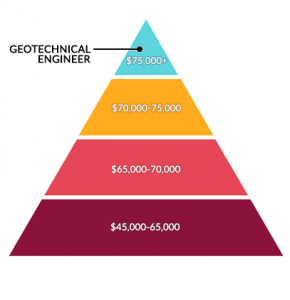5 Easy Facts About Geotheta Shown
5 Easy Facts About Geotheta Shown
Blog Article
Indicators on Geotheta You Should Know
Table of ContentsThings about GeothetaRumored Buzz on GeothetaGet This Report on GeothetaA Biased View of Geotheta
They team up with civil designers, architectural engineers, designers, and other professionals to incorporate geotechnical considerations into the total job design and building procedure. This requires efficient team effort, control, and interaction to make certain that the geotechnical facets line up with the project goals and meet governing needs.Mining & Products Design: Principles of boring, infiltration rates, and elements impacting the option of boring technique. Characteristics of explosives, firing systems and blast patterns. Blasting methods in surface and underground operations. Special blasting strategies at excavation borders. Vibration and sound control. Mechanical and continual techniques to fragmentation, consisting of longwall shearing and fullface boring.
Modelling of fragment and particle size circulations; comminution as a transfer function. Comminution modern technology: crushing, grinding, dimension category. Integrated evaluation of fragmentation and comminution procedures. Supplied by: Mining & Materials Engineering.
Fascination About Geotheta
Bachelor's level programs in civil, geotechnical, geological, and environmental design normally last four years and consist of general education and learning training courses in English, social science, and the liberal arts, along with courses in innovative mathematics, structural geology, and fluid mineralogy. (https://dzone.com/users/5183482/geotheta.html)
Geotechnical design entails the evaluation of the dirt and rock problems at a certain site, and their implications for the development of that website. As the majority of frameworks rely upon the ground for assistance, it is without surprise that a detailed understanding of the ground problems, and the viability of structure systems, are important to the lasting security and performance of the building or structure.
Specialising in the investigation of geological formations and ground behavior, geotechnical engineers perform clinical investigations and screening to comprehend the influence these geological formations might have on the layout and building of structure, civil and infrastructure jobs. This experience is vital for the design and building of buildings, roads, passages, dams, bridges, and water supply and sewer system.
The geotechnical team at Douglas Partners routinely talk to engineers, layout engineers, developers, and builders to make recommendations on style and advancement proposals to ensure that the built frameworks are appropriately developed for the ground conditions. The style of footing systems requires to consider the weight of the structure, the capacity of the ground to support that weight together with activity tolerances and reliable construction.
Some Of Geotheta
This task is greatly simplified by the usage of our Douglas Map geospatial system that makes this info easily accessible in a simple to utilize web browser user interface. A geotechnical designer will guide the exploration of boreholes and examination pits to accumulate soil and other examples, and likewise evaluate surface attributes and ground exposures to develop a geotechnical model of the subsurface problems.
Depending upon the project type and ground conditions came across, research laboratory testing may amongst other things assess toughness, compressibility, reactivity and/or permeability of soil and rock examples. Hereafter information is collected and collected, the results are used for a geotechnical version of the website, which is generally presented as sections throughout the site.

A geotechnical examination naturally can only evaluate the ground conditions at the places pierced or dug deep into. All-natural variations in soil and rock conditions can happen throughout a site and between examination places. It is for that reason good practice that the geotechnical designer be kept throughout building of the job to supply on-site verification that the ground conditions encountered follow the expectations and recommendations supplied in the geotechnical investigation record.
8 Simple Techniques For Geotheta
Geotechnical designers utilize their comprehensive knowledge of soil and rock to examine threat and fix issues on varied infrastructure projectsGeotechnical design is a specialist branch of civil engineering which considers the practices of earth materials and the application of dirt and rock mechanics. Engineer of Record. As a geotechnical engineer, you will examine Get More Info the physical, mechanical and chemical properties of dirt and rock in order to develop structures, maintaining frameworks and earthworks
Geotechnical engineering is carefully linked to and overlaps with, both design geology and ground engineering - https://profile.hatena.ne.jp/geotheta/. It's feasible to specialise in geotechnics or benefit a geotechnical firm yet be called a design rock hound or a ground designer. As a geotechnical designer, you'll require to: build and keep partnerships with customers and other professionals associated with the website, throughout each projectmaintain safety requirements on site bear in mind expense effects when you make recommendationsstudy geological maps and airborne pictures from a variety of sources and from different time periodsexamine building plans to see how possible they are based on your understanding of the siteinvestigate dangers or geological dangers for the sitesearch for environmentally delicate features, such as garbage dump beginning to develop accurate and interpretive ground modelsplan field investigationsdrill and analyse samples of bedrock, soil, groundwater and additional products oversee other professionals on sitesolve technological issues as they occur, such as unforeseen frameworks at drill sitesmonitor problems during and after building to make certain structures are secure in the short and lengthy termadding data collected on website to your preliminary researchcreating geotechnical calculations, illustrations, and 2 or three-dimensional computer models translating the datamaking recommendations regarding the recommended use the website

Report this page